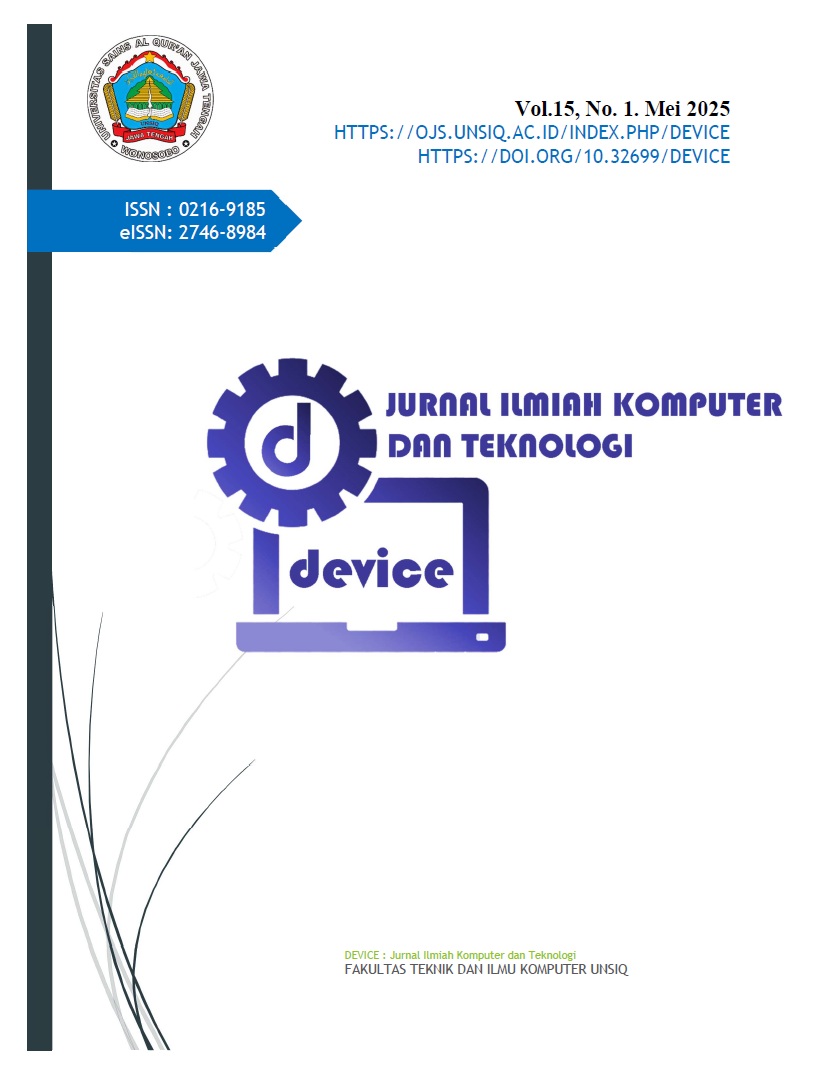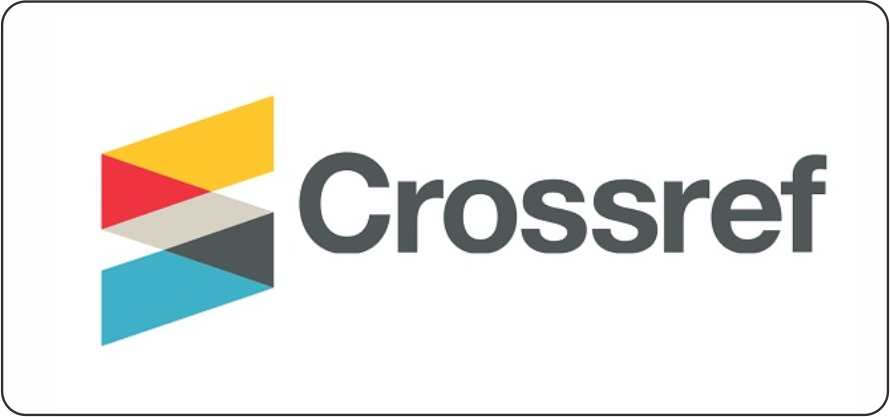KINERJA MEKANIK BATA RINGAN MENGGUNAKAN APLUS DAN PASIR PANTAI
DOI:
https://doi.org/10.32699/device.v15i1.9250Keywords:
Bata Ringan, Pasir Pantai, Foaming Agent, Kuat tekan, Electrical resistivityAbstract
Penelitian ini bertujuan untuk mengevaluasi performa mekanik dan sifat kelistrikan bata ringan dengan memanfaatkan pasir pantai Pamboang sebagai agregat halus dan foaming agent rasio 1:60 sebagai bahan pembentuk pori. Penggunaan material lokal seperti pasir pantai dinilai penting untuk meningkatkan efisiensi biaya dan keberlanjutan konstruksi, khususnya di daerah dengan keterbatasan sumber daya agregat konvensional. Benda uji dibuat dalam bentuk kubus 5×5×5 cm dengan variasi penggantian semen Portland oleh bahan aditif Aplus hingga 100%. Pengujian meliputi kuat tekan pada umur 7, 28, dan 91 hari serta electrical resistivity pada umur 91 hari. Hasil menunjukkan bahwa kuat tekan tertinggi sebesar 24,94 MPa diperoleh pada sampel tanpa Aplus, sedangkan resistivitas listrik seluruh sampel berada dalam kategori sangat rendah risiko korosi (>165 kΩ·cm). Temuan ini mengindikasikan bahwa pasir pantai dapat digunakan sebagai alternatif agregat halus untuk bata ringan, selama proporsi pengikat diatur dengan tepat.
References
Azarsa, P., Gupta, R., 2017. Electrical Resistivity of Concrete for Durability Evaluation: A Review. Adv. Mater. Sci. Eng. 2017, 1–30. https://doi.org/10.1155/2017/8453095
Barbieri, V., Lassinantti Gualtieri, M., Manfredini, T., Siligardi, C., 2021. Lightweight concretes based on wheat husk and hemp hurd as bio-aggregates and modified magnesium oxysulfate binder: Microstructure and technological performances. Constr. Build. Mater. 284, 122751. https://doi.org/10.1016/j.conbuildmat.2021.122751
Dasar, A., Patah, D., 2024. Kekuatan dan Durabilitas Beton Menggunakan Palm Oil Fuel Ash (POFA) dan Pasir Pantai. Borneo Eng. J. Tek. Sipil 8, 83–94. https://doi.org/10.35334/be.v8i1.5090
Dasar, A., Patah, D., Apriansyah, 2022a. Effect of limestone as coarse aggregate and seawater as mixing water on half-cell potential of steel bar in concrete, in: AIP Conference Proceedings. Presented at the THE PROCEEDINGS OF THE 4TH EPI INTERNATIONAL CONFERENCE ON SCIENCE AND ENGINEERING (EICSE) 2020, AIP Publishing, Gowa, Indonesia, p. 030015. https://doi.org/10.1063/5.0095220
Dasar, A., Patah, D., Hamada, H., Sagawa, Y., Yamamoto, D., 2020. Applicability of seawater as a mixing and curing agent in 4-year-old concrete. Constr. Build. Mater. 259, 119692. https://doi.org/10.1016/j.conbuildmat.2020.119692
Dasar, A., Patah, D., Hamada, H., Yamamoto, D., Sagawa, Y., 2022b. Life performance of 40-year-old RC beams with different concrete covers and bar diameters in natural corrosion environments. Structures 46, 2031–2046. https://doi.org/10.1016/j.istruc.2022.11.033
Deb, S., Mitra, N., Majumdar, S.B., 2020. Influence of Surface Morphology of Fibers on the Tensile and Flexural Ductility of Polypropylene-Reinforced Cementitious Composites. J. Mater. Civ. Eng. 32. https://doi.org/10.1061/(asce)mt.1943-5533.0003048
Elshahawi, M., Hückler, A., Schlaich, M., 2021. Infra lightweight concrete: A decade of investigation (a review). Struct. Concr. 22. https://doi.org/10.1002/suco.202000206
Ghazanlou, S.I., Jalaly, M., Sadeghzadeh, S., Korayem, A.H., 2020. A comparative study on the mechanical, physical and morphological properties of cement-micro/nanoFe3O4 composite. Sci. Rep. 10. https://doi.org/10.1038/s41598-020-59846-y
Hanif, A., Lu, Z., Cheng, Y., Diao, S., Li, Z., 2017. Effects of Different Lightweight Functional Fillers for Use in Cementitious Composites. Int. J. Concr. Struct. Mater. 11, 99–113. https://doi.org/10.1007/s40069-016-0184-1
Kadela, M., Kukiełka, A., Małek, M., 2020. Characteristics of Lightweight Concrete Based on a Synthetic Polymer Foaming Agent. Materials 13, 4979. https://doi.org/10.3390/ma13214979
Kozłowski, M., Kadela, M., 2018. Mechanical Characterization of Lightweight Foamed Concrete. Adv. Mater. Sci. Eng. 2018. https://doi.org/10.1155/2018/6801258
Mehta, P.K., Monteiro, P.J.M., 2014. Concrete: microstructure, properties, and materials, Fourth edition. ed. McGraw-Hill Education, New York.
Neville, A.M., Brooks, J.J., 2010. Concrete technology, 2. ed. ed. Prentice Hall, Harlow.
Park, C.-S., Jeong, J.-H., Park, H.-W., Kim, K., 2017. Experimental Study on Electrode Method for Electrical Resistivity Survey to Detect Cavities under Road Pavements. Sustainability 9, 2320. https://doi.org/10.3390/su9122320
Patah, D., Dasar, A., 2022. PENGARUH LIMBAH BETON SEBAGAI PENGGANTI AGREGAT KASAR PADA KEKUATAN BETON. JTT J. Teknol. Terpadu 10, 158–163. https://doi.org/10.32487/jtt.v10i2.1580
Patah, D., Dasar, A., Apriansyah, A., Caronge, M.A., 2023. Strength Development of Seawater Mixed and Cured Concrete with Various Replacement Ratios of Fly Ash. Mater. Sci. Forum 1091, 111–118. https://doi.org/10.4028/p-1ckry6
Patah, D., Dasar, A., Fakhruddin, F., Shintarahayu, B., Apriansyah, A., 2024. The Impact of Fly Ash and Sea Sand on Strength and Durability of Concrete. Key Eng. Mater. 1000, 23–33. https://doi.org/10.4028/p-o0wa24
Patah, D., Dasar, A., Hamada, H., 2022. Electrochemical consideration on corrosion performance of steel bar embedded in SCMs mortar with initial chloride contaminated, in: AIP Conference Proceedings. Presented at the THE PROCEEDINGS OF THE 4TH EPI INTERNATIONAL CONFERENCE ON SCIENCE AND ENGINEERING (EICSE) 2020, AIP Publishing, Gowa, Indonesia, p. 030016. https://doi.org/10.1063/5.0095233
Patah, D., Dasar, A., Hamada, H., Astuti, P., 2021. Effects of Mineral Admixture on Electrical Resistivity and Permeability of Chloride Contaminated Mortar, in: Advances in Engineering Research. Presented at the 4th International Conference on Sustainable Innovation 2020–Technology, Engineering and Agriculture (ICoSITEA 2020), Atlantis Press, Yogyakarta, Indonesia. https://doi.org/10.2991/aer.k.210204.013
Patah, D., Dasar, A., Nurdin, A., 2025. Sustainable concrete using seawater, sea-sand, and ultrafine palm oil fuel ash: Mechanical properties and durability. Case Stud. Constr. Mater. 22, e04129. https://doi.org/10.1016/j.cscm.2024.e04129
Robles, K.P.V., Kim, D.-W., Yee, J.-J., Lee, J.-W., Kee, S.-H., 2020. Electrical Resistivity Measurements of Reinforced Concrete Slabs with Delamination Defects. Sensors 20, 7113. https://doi.org/10.3390/s20247113
Samouëlian, A., Cousin, I., Tabbagh, A., Bruand, A., Richard, G., 2005. Electrical resistivity survey in soil science: a review. Soil Tillage Res. 83, 173–193. https://doi.org/10.1016/j.still.2004.10.004
S.K., K., Singh, S.K., Chourasia, A., 2020. Alternative fine aggregates in production of sustainable concrete- A review. J. Clean. Prod. 268, 122089. https://doi.org/10.1016/j.jclepro.2020.122089
Thienel, K.-C., Haller, T., Beuntner, N., 2020. Lightweight Concrete—From Basics to Innovations. Materials 13, 1120. https://doi.org/10.3390/ma13051120
Wang, X., Liu, L., Zhou, H., Song, T., Qiao, Q., Zhang, H., 2021. Improving the compressive performance of foam concrete with ceramsite: Experimental and meso-scale numerical investigation. Mater. Des. 208, 109938. https://doi.org/10.1016/j.matdes.2021.109938
Xing, X., Liu, T., Pei, J., Huang, J., Li, R., Zhang, J., Tian, Y., 2020. Effect of fiber length and surface treatment on the performance of fiber-modified binder. Constr. Build. Mater. 248, 118702. https://doi.org/10.1016/j.conbuildmat.2020.118702




















